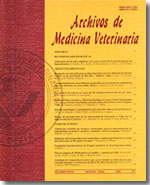Current and emergent technologies for animal identification and their use in animal traceability
Main Article Content
Abstract
The use of labels for the identification of live animals and its products have been practiced for over 2000 years, being extensively used in Europe with the appearance of the first epidemic diseases. At present, the advances on crops and livestock genetic engineering, the appearance of new diseases related with food consumption (i.e. mad cow disease, E. coli 0157, etc.), and the discovery of contaminants in the food chain have produced great concern among the consumers. This is why it is so important that producers provide consumers with a guarantee on the product quality, specially since they now demand to know origin and quality of the food. In international markets, new procedures based on the concept from gate to plate have been implemented through the food chain, in order to bring out trademarks and certified processes which guarantee the quality of the food that goes out in the market. As a result of this new consumer demand, the traceability concept in food has been gradually incorporated in our vocabulary and it is now one of the main concerns of the food industry. The traceability systems used to identify animals, monitor their movements and trace their products have considerably evolved over the last years. These systems must be convenient, easy to read, durable, and harmless. Many devices have been used pursuing this objective, such as tattoos, ear-tags, electronic chips, iris and retina identification and more recently, DNA fingerprinting and molecular markers. It has become important to harmonise approved systems in order to provide a better guarantee and to facilitate international trade of animals and their products. Today, traceability is an esssential requirement in terms of exporting high-value products to the global food markets providing the producer with an opportunity to reach better prices for a differentiated product. Thus, many meat industries have turned this concern in a great commercial opportunity.

